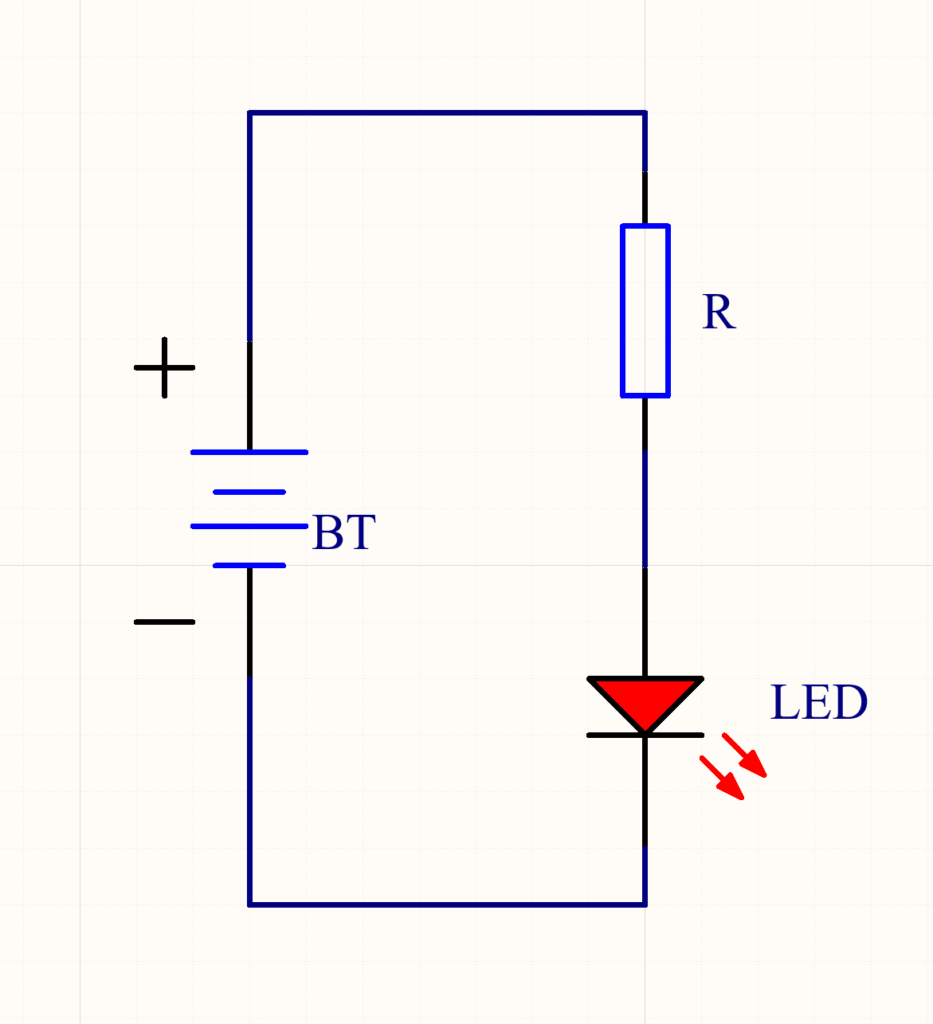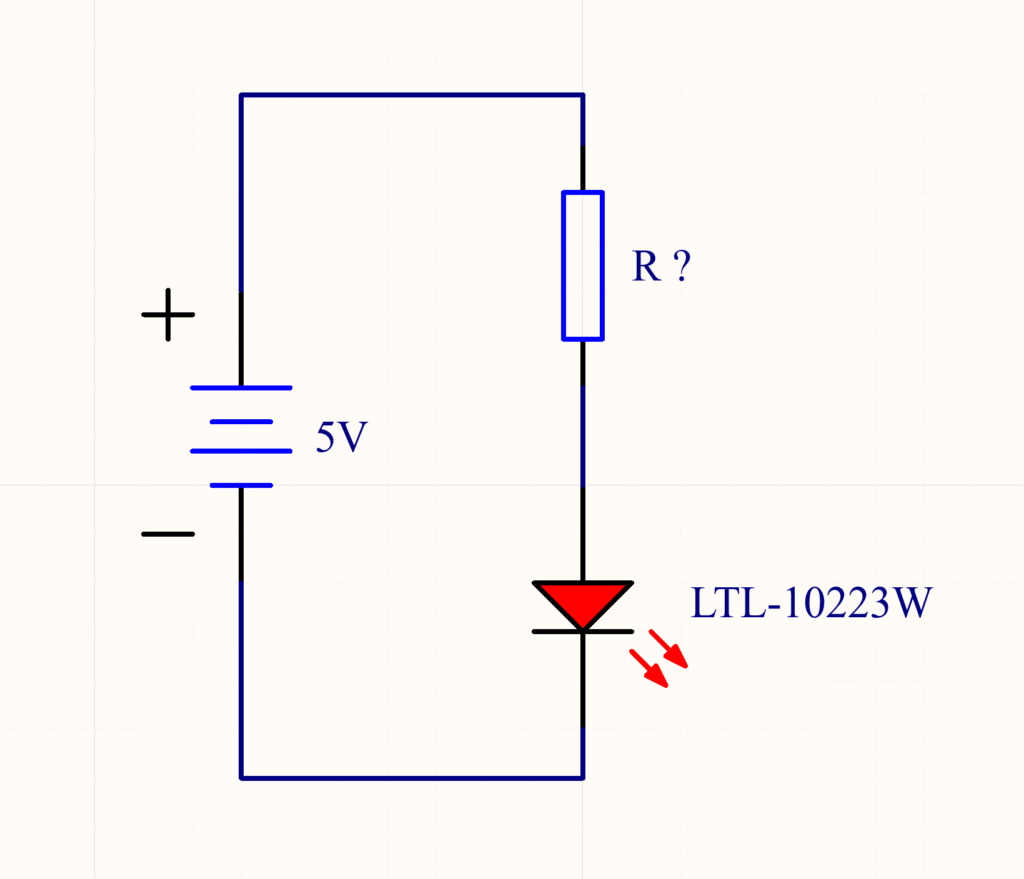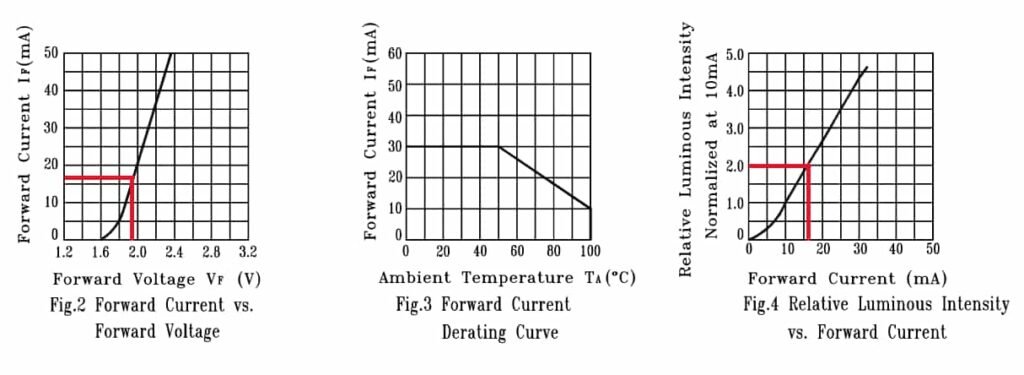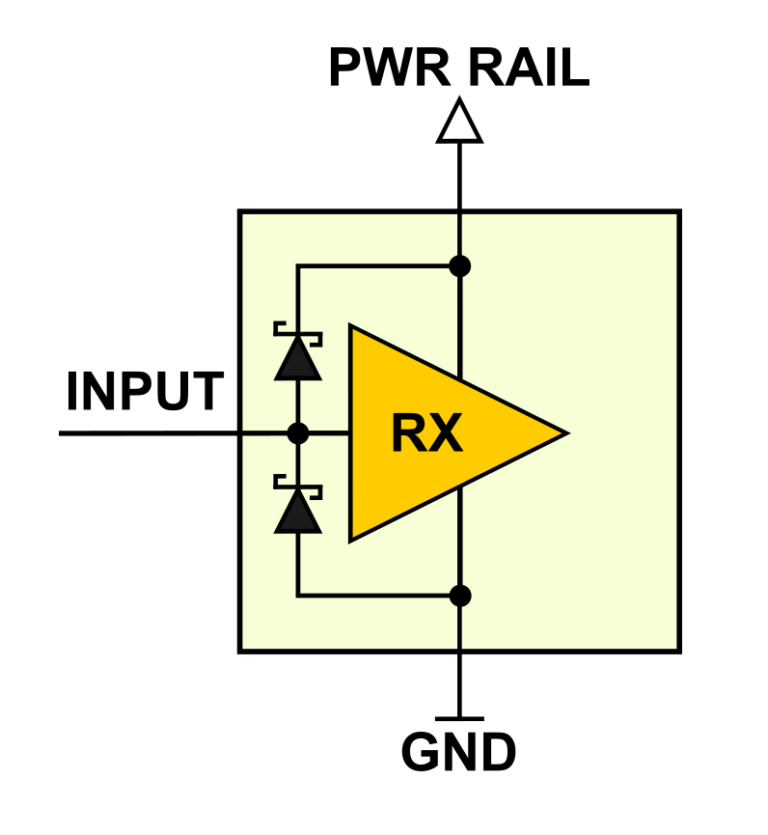A light emitting diode (LED) circuit in electronics is an electrical circuit that powers an LED. The circuit must limit the current to avoid damaging the LED while supplying enough current to illuminate the LED at the necessary brightness. The simplest and most widely used circuit for driving LEDs is just a series resistor.
OPERATION OF LIGHT EMITTING DIODE

A current that flows in the forward direction when the diode is forward biased is known as a forward current (IF). When this current flows through the LED, the voltage generated between the anode and cathode is called the forward voltage (VF). The IF-VF characteristics are the most important parameters when considering the actual LED lighting circuit. Ohm’s and Kirchhoff’s laws are used to determine the optimal resistor value for a simple circuit (Figure 1) where a resistor is connected in series with the LED to control the current. The formula that is used to calculate resistor values is provided below.
$$R=\frac{V_{in}\;-\;V_F}{I_F}$$
From this equation, we can see that the resistance is calculated by subtracting the LED forward voltage from the supply voltage and dividing the result by the desired forward current.
LED CIRCUIT RESISTOR CALCULATION EXAMPLE

Let’s assume that we want to connect a 5mm radial red LED with the manufacturer’s part number of LTL-10223W. We have a 5V power supply and we want it to glow at around 100mcd luminous intensity. Therefore, we must determine the resistance value for the circuit shown in Figure 2.
The LED datasheet contains all the necessary information. According to the datasheet’s third page, a forward current of 10mA produces light with a luminous intensity that ranges from 19 to 60 mcd (Figure 3).

The relative luminous intensity vs. forward current and forward current vs. forward voltage graphs can be found on the fourth page (Figure 4).

These graphs (Figure 4) show us that the required current to achieve our desired luminous intensity of 100mcd is roughly 16mA. Knowing that we need 16mA forward current, we can find that in this case, forward voltage should be around 1.95V.
According to the formula above, we get that the needed resistance is around 190R:
$$R=\frac{5V\;-\;1.95V}{16A}=190.6\;\Omega$$
In this situation, 200R would be the resistor of choice because it is widely available.
SUMMARY
A series resistor is the simplest circuit to drive an LED. An LED has a voltage drop specified at the intended operating current. A current determines the brightness of an LED. For simple LED circuits, the current limiting resistor value can be calculated using Kirchhoff’s and Ohm’s laws.


